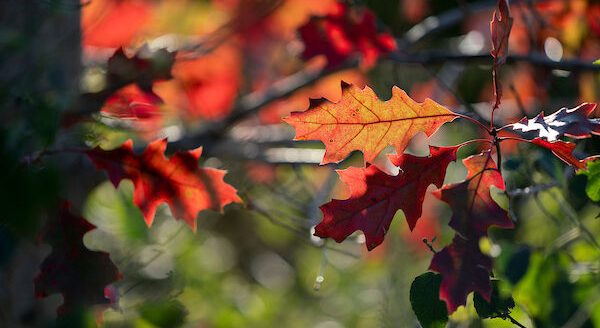A tree is somewhat like an iceberg
A substantial and critical part of a landscape tree is out of sight. If you want healthy trees, then you need to keep gardening outside of your tree’s root zone.
That is restrictive for most of us, and there are some generic considerations that may help to keep your tree safe. The most important issue is knowing where the critical root zone is. For most trees the feeder roots are found in the topmost 18 inches of soil and extend several feet outside the drip-line of the canopy. When that shallow, wide area is thoroughly appreciated, it becomes easier to accept that deep watering means to 18 inches, not 3 feet. And it is easy to visualize that even shallow trenching across that root zone cuts off a section of roots like cutting fingers from a hand. The resulting root stress rarely kills directly but has long term consequence.
Another abuse we expect roots to tolerate is adding too much mulch (or concrete sidewalk) on top of the root zone. Roots need oxygen as much as they need water and covering the roots with too much of anything inhibits their ability to access oxygen. Mulch provides moisture retention, inhibits weed growth, minimizes rapid water run-off and provides some cooling. However, 3 inches is enough; 5 inches is too much and can cause stress from cutting off oxygen to the roots. Also, never place mulch against the bark. You may escape short term harm but covering the bark with mulch invites bugs and promotes mold that may critically damage the bark.
Another serious determent to roots is cutting away the soil too near the tree to install a lower construction. Cutting soil away from a root zone is like trenching, a whole section of nutrient absorption is removed. If you can make the cut far enough away that only a small percentage of roots are lost directly, you still need to buttress the remaining soil, so it does not erode over time. This gradual exposure of tender roots leads to desiccation and further stress.
There are numerous publications to help when you are ready to dig a little deeper. Oklahoma Cooperative Extension Service publication HLA-6429, Site Disturbance and Tree Decline, helps one wade through the stress of construction impact on trees and how to avoid the worst of it. Other OSU Fact Sheets are available at pods.dasnr.okstate.edu/docushare. Type “trees” in the search box at the top right of the page to quickly access a hundred publications about trees and their diseases.
One last caution is that trees do not die from root stress quickly. Damage done to roots may not show up until five to 10 years later. This means that when you are looking to purchase a property with mature trees, use your new knowledge of roots to spot insults that may threaten your tree’s future.
